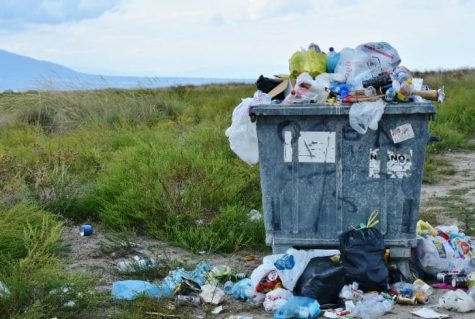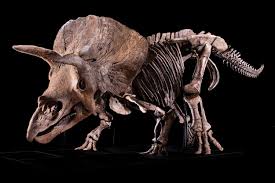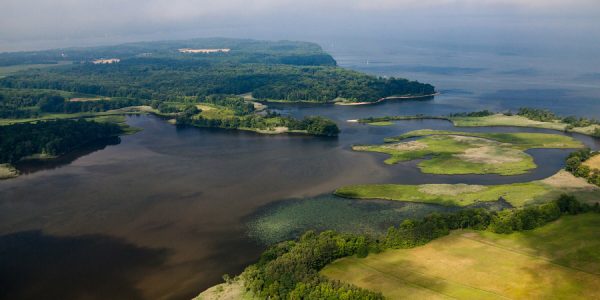Causes of pollution on Earth rises overtime
We go outside every day breathing in and out the same air. But how sure can we be about how clean that air is? Pollution has been an ongoing problem in America since the 19th century. There are three types of pollution, air, water, and land. Each of which humans have caused. Many wildlife animals, humans, and oceanic life has been affected by this ongoing problem. But what are we going to do as a country to help fix the problem?
Trash doesn’t appear in the ocean by itself; it is a process. If a person was walking and drinking at the same time and the person was to drop the bottle the wind would blow it to a lake or stream and it would travel to the ocean and that’s how the ocean gets polluted. The cause was dropping the water bottle and the effect is it ending up in the ocean. Repeat this process over and over and you get water pollution. One of the most leading causes for oceanic life dying are due to toxins, sewage, and discharge released into the water.

Organizations like World Wildlife help bring awareness to threats to our environment such as water pollution. According to World Wildlife, their article talks about the causes, the impact, and the solutions to the environmental problems. When talking about water pollution the article stated, “In water, this overabundance of nutrients, a process called eutrophication, can fuel the excessive growth of phytoplankton and algae, which can sometimes have devastating consequences.”
“Harmful algal blooms—blooms of species that produce deadly toxins and sometimes known as “red tides” or “brown tides” for their appearance in the water—can kill fish, marine mammals and seabirds and harm humans. This hypoxia creates a “dead zone” where fish cannot live. More than 400 areas around the world have been identified as experiencing eutrophication and 169 are hypoxic.” World wildlife stated.
Not only are the fish in jeopardy but also human life. The reason being is because we consume animals that live in the ocean so when the water becomes polluted so do fish and we catch those fish to eat so humans are also digesting toxins into their systems.
When you think about air pollution you picture factories burning fossil fuels, or you think about transportation and how all of it can affect the environment. But air pollution comes in many forms. Over the years air pollution has caused diseases, allergies, and death in human life. It also affects animals and plants.
A cause of air pollution can be related to a forest fire. If there is lighting and it strikes a dry tree it will start a fire causing it to spread and the effect of this would be irritation of the eyes and nasal passages, wheezing, and bad coughs for humans. For animals, they wouldn’t have anywhere to live and acid rain can affect the composition of rivers and streams, therefore, making it toxic for fish.
“Industrial processes also emit particulate matter, such as sulfur dioxide, carbon monoxide and other noxious gases. Indoor areas can become polluted by emissions from smoking and cooking. Some of these chemicals, when released into the air, contribute to smog and acid rain,” World wildlife stated.
Land pollution damages and contaminates the earth by destroying animal habitats, soil, and etc. There are multiple causes for land pollution littering, mining, construction, and nuclear waste. One of the main causes of land pollution is waste dumping, the effect of waste dumping is soil pollution, change in climate, human health will be affected, and there would be an effect on wildlife.
National Geographic is another organization makes us aware of what trash does. In the article National Geographic, it states “Trash is another form of land pollution. Around the world, paper, cans, glass jars, plastic products, and junked cars and appliances mar the landscape. Litter makes it difficult for plants and other producers in the food web to create nutrients. Animals can die if they mistakenly eat plastic. Garbage often contains dangerous pollutants such as oils, chemicals, and ink. These pollutants can leach into the soil and harm plants, animals, and people.”
There are multiple ways to reduce pollution other than recycling. According to the article actions you can take to reduce air pollution by Conserve energy – at home, at work, everywhere, Keep car, boat, and other engines properly tuned, Reduce the number of trips you take in your car, reduce or eliminate fireplace and wood stove use, and reduce or eliminate fireplace and wood stove use.
Your donation will support the student journalists of Parkdale High School. Your contribution will allow us to cover our annual website hosting costs and publish some printed editions, as well.

Princess Passie is a senior year, and this is her first full year on The Paw Print staff. She contributes to the staff by writing informational articles....











